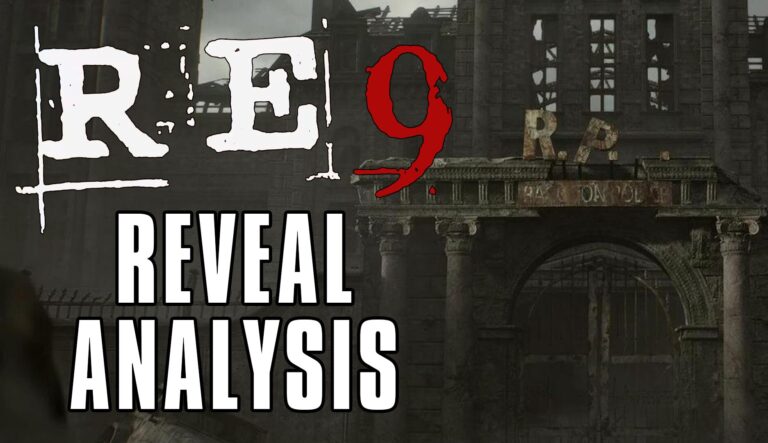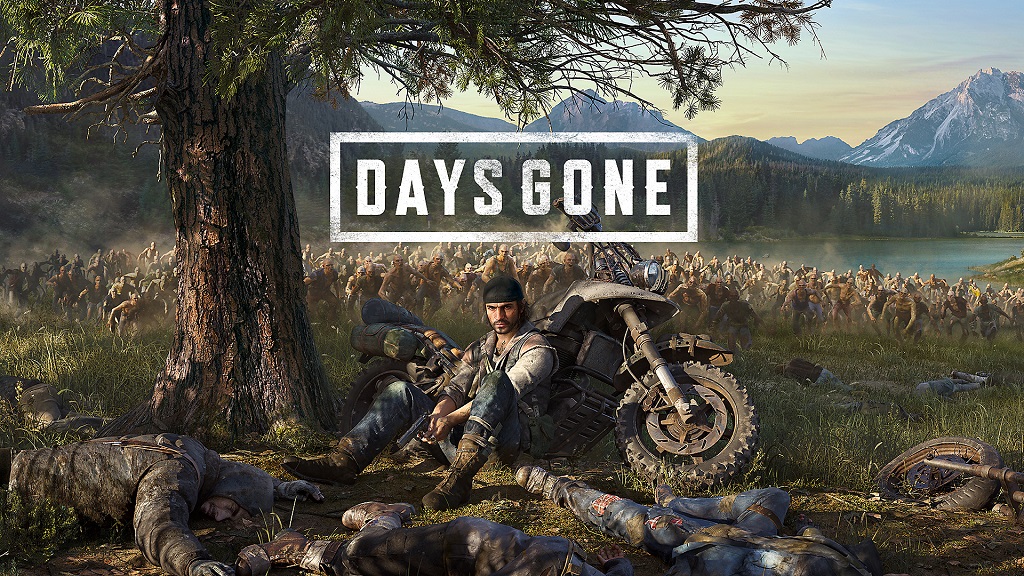
After nine days of play, averaging at ten to twelve hours per day, thirty-seven cans of Coke Zero, two pounds of coffee beans, and at least four rescheduled appointments, I have finally finished the story of Days Gone. I have a litany of trophies to show for it, including three ultra-rare trophies. I’ve cleared every infestation, rescued every hostage, and upgraded my bike to its maximum speed and durability to allow for running away from every horde, screaming profanities and hitting every tree along the way. I looked forward to Days Gone for years, and now that it is done and I’ve given myself a day to think on how I feel about it, I am happy to be writing this review.
First things first, this review is a tad late because we did not receive an advanced review copy. I did have the game pre-ordered, though, so I was able to jump in at the same time as all of you. I am reviewing Days Gone as a full-price customer who got their copy on release day, which comes with unique issues. Most people who knew I was reviewing the game sent me complaints about other reviews, specifically focusing on ‘SJWs ruining game reviews’ and on the social media discovery that several reviewers did not complete much of the game, leading to some outrage among the community. To that end, I want to assure our readers that our policy at RoH is to do our best to complete games before writing a review. While my trophies and profile on PSN are private, I have shared the trophy for completing the main story of Days Gone directly from my PS4 on my Twitter profile. Rest assured, I have completed the game.
The hullabaloo over whether reviewers completed Days Gone does lead into my first issue with the game: the first five to eight hours of play blow. Hard. Around the eighth hour, Days Gone comes into its own. Several characters have been introduced, the foundation for the main story has been laid — whether it’s worth the time investment to reach the real meat of the game is up to you.
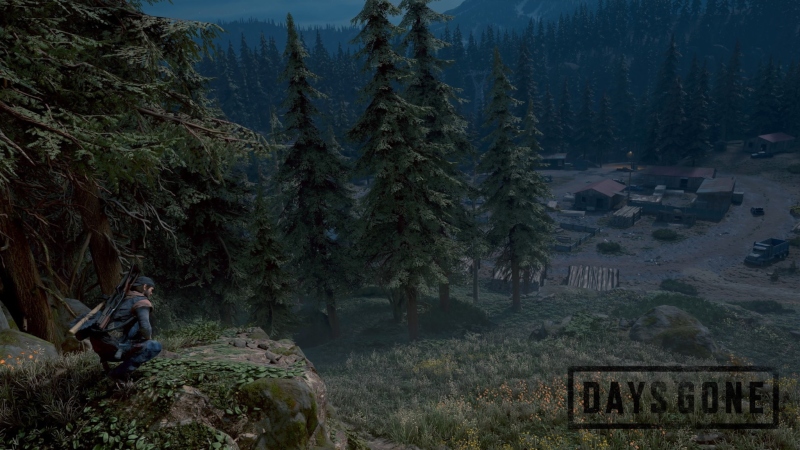
The controls put every possible part of the DualShock 4 controller to use. This is the best utilization of the touchpad that I’ve personally seen, with swiping in different directions linked to different options. The map, skill trees, storyline and quest management, and inventory are all handled from the touchpad, allowing players to quickly access what they need without going through multiple menu options first. There is also an inventory wheel that manages craftable and existing items for quick use. Primary weapons, health items, explosives, traps, sidearm, and special weapons are on the wheel. I used the crossbow almost exclusively, and crafting bolts from the speed menu was simple even in the middle of combat. Crafting explosives while being chased by 571 infected is easy but incredibly stupid. Pro tip: craft explosives before running into a horde.
That said, getting used to the controls takes some time. That learning curve, combined with the need to farm experience for skill points so that you aren’t a self-delivering Happy Meal for some hungry zombies, makes for an agonizing grind early on. If you go into the game knowing this and take on side quests as soon as they become available and farm infected for points, you’ll have an easier time of it. Stay awake at night instead of sleeping through it, and you can easily get an extra 75-100 ears to turn in for bounties, along with 20-50 experience per infected killed. The bounties pay for bike upgrades so that it isn’t going super slow while broadcasting your exact location to every horde in the region and running out of gas as soon as they figure it out.
I spent a good quarter of my time in the early hours hunting for gas cans to refuel because I was out. You learn pretty quickly to keep that tank full, and earning enough credits and trust to buy a bigger gas tank and quieter exhaust becomes your main priority. Once you have that and a couple of points in skills for sneaking, you’re golden. The world is your screaming, angry, infected oyster… most of the time. Upon certain storyline quests automatically unlocking, the game does lock players into very linear play, disallowing anything that the developers didn’t intend in that quest. Wanted to fill up on gas and grab the side quest you specifically rode into this camp to pick up? Too bad. Oh, you see a better way into this area right around the corner that any reasonable human would use in this case? We wanted to route you this very specific way and will reset the entire quest if you try. You very carefully timed this quest to show up at a certain time of day? Too bad, we are advancing you to our chosen time on the next day. Nothing will ever break the fourth wall like calling something an open-world game, then making it more scripted than an episode of Real Housewives.
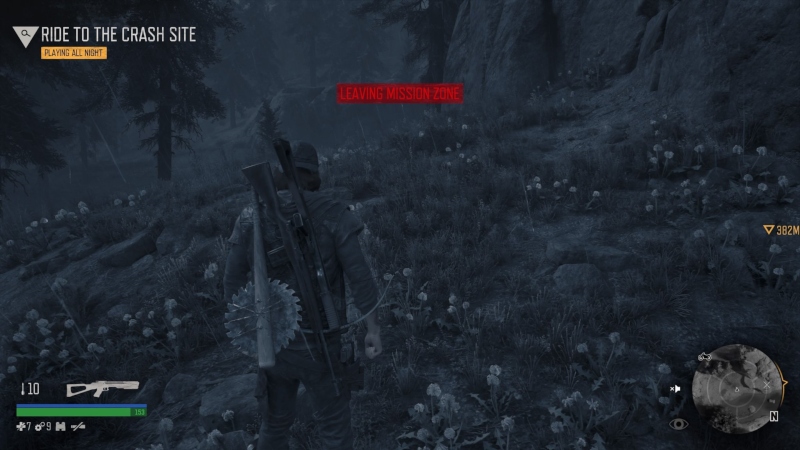
Early on, you have two regions to explore and one camp in each. Both are important, as the best upgrades for your bike are at one and the best weapons are at the other. Randomly triggered events throughout the world give you chances to rescue random people, take out roving gangs of bandits, or take on entire fortified camps of aggressive human groups. One of these is a cult that becomes a major plot point, one is simply a ragtag gang of bandits looking for easy targets, and one is the congealed remains of the pre-apocalyptic anarchist movement. All have their own quirks, forcing players to find unique approaches to each camp. My favorite approach is to grab the nearest horde and run like hell directly into the camp, then out through the other side and come back the next morning. Infected do not require repairs or reloads. While all encounters and events give experience and credits, the camps are particularly good fodder. Each camp has map locations marked in its bunker, along with a craftable plan. Recipes for health items, weapons, explosives, and traps can be found in camps hours before they are awarded for completing certain quest lines. In two cases, camps contained plans I received as rewards for quests in the final area of the game. Players avoiding these camps will absolutely have a less enjoyable time in the game than those who clear them out.
Similarly, the National Emergency Response Organization- NERO for short- checkpoints have additional dialogue recordings that explain what happened during the outbreak and immediate aftermath. They also contain syringes that can be used to directly increase focus, health, or stamina points by 25. In the last half of the game, those extra points added to stamina and health can be the difference between successfully completing a quest or having to opt out.
Let’s talk about opting out for a moment. It took me a full day to decide how I feel about this mechanic. Players who play the game on normal or easy difficulty are given the opportunity to skip a quest after failing it several times. This is particularly noticeable when completing quests requiring the clearing of hordes. Interestingly, opting out skips directly to the end of the fight and gives the player both the trophy for completing the quest and the bounties for most of the enemies. While the rest of the game will still be difficult for players requiring alternative controls and settings, that is a nice touch. Bend had many ways they could have handled this, so to take the opportunity to treat players who cannot clear a horde or capture an enemy exactly the same as those who can is fantastic. Bend made a statement by doing this: you are not a lesser player or fan just because you were not able to click with this particular part of their game.
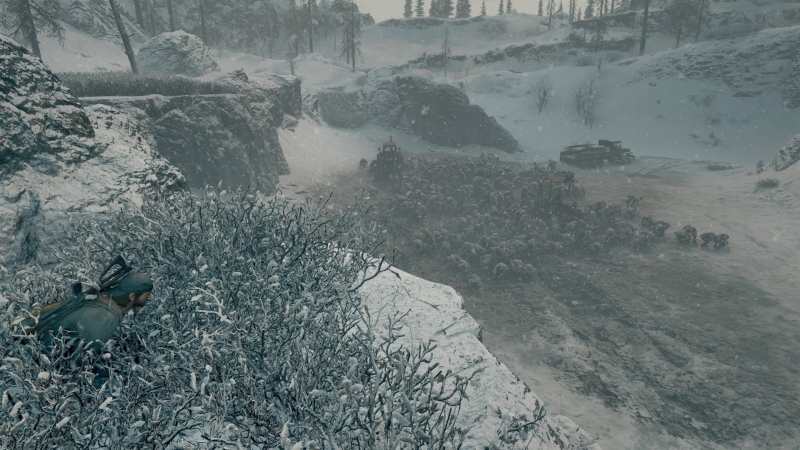
This is where we are going to touch on the ‘OMG SJWs RUINING MY GAMES’ thing for a moment. I read that review so that I can reply to something players have made it clear that they want to address. I think that the writer has the right to her opinion, and I think that she had a reason for it. I do not agree with her conclusion after completing the game myself, but every single person is allowed to have their own reactions to art, and those reactions are informed by their lived experiences. We need to respect that. Deacon St John would certainly have respected it, even if he didn’t agree.
Throughout the game, Deek spends his time protecting and helping people he doesn’t like, sometimes doesn’t trust, and those who have nothing to offer him. He goes after those who harm the helpless. He stands up for underdogs, weirdos, and strangers. Multiple characters in the game are gay, and even the evangelical zealot in the game demands respect among his followers for all sexualities, races, and cultures. Gay, female, or persons of color aren’t treated differently by the characters, and each of the camp leaders throughout the game repeats the reason in their own way: when things get dire, hinging our beliefs about others on unimportant differences will be our demise. In the wasteland left behind when society falls, it isn’t called being an SJW. It is just called living, and it is expected of everyone.
To the point that women, and Sarah in particular, are treated like a second class in the game, I wholeheartedly disagree. Playing fully through the game, I felt that women, minorities, and different sexualities were represented well. They were leaders, colleagues, the weak, and the savior in equal turns. Their differences were an obvious part of them, but it never felt contrived or called-out. It just was, as they were. Without spoiling the story, Sarah gets plenty of screentime and her own voice. Though the early flashbacks don’t give you much of her wit and grit, her portrayal blossoms later in the game. Sarah is a fully realized character with tons of depth. She exists independent of Deacon despite their relationship.
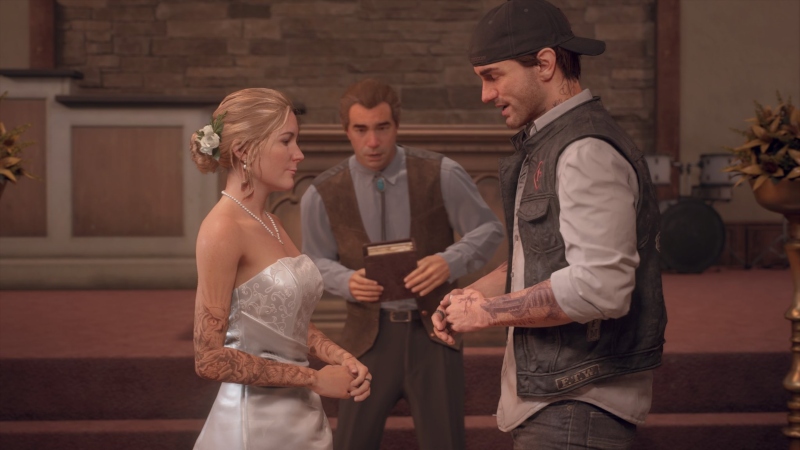
I also like the way Deacon St John grows throughout the game. From the start, Deacon is aggressive, foolish, and takes unnecessary risks. He avoids relationships with others, protected by emotional walls stronger than Fort Knox. By the end, he finds his place and his people. He opens up to not just direct relationships, but friendships in general. He finds a reason to live again. He might not be the best person in the world, but as one very wise character says, “we’ve all done things we aren’t proud of.” Deacon’s story is intertwined with the stories of dozens of other people, and the beginnings and ends of those relationships are touching. I am not ashamed to say that two moments in the game made me cry. The storytelling in Days Gone is superb, and it is incredibly well acted.
I do have one qualm with the voice acting, though. Deacon has obviously lost a few of his marbles out in the wasteland. Wandering through it ourselves, it is easy to see why, and I can understand how this would lead to the unhinged remarks Deek makes as he encounters enemies and rogue camps. Why, though, did the director have these rantings acted in a way that can only be described as uncomfortably sexual? The way Deek responds to wiping out an anarchist camp, I’m honestly surprised I didn’t have to craft new underwear or carry crusty socks in my inventory. My dude. What the hell? It legitimately sounds like the sex talk of a former partner of mine, leaving me torn between laughing until I cry or bleaching my brain via my ear canal every time.
If I were judging Days Gone just on story, sound, and visuals, this game would get an easy 10/10. The music is gorgeous and fits the setting perfectly. Orchestral soundtracks are the absolute best, and a couple of tracks borrowed directly from Sons of Anarchy are used at the exact right times. The sound effects accompanying gameplay are also executed perfectly, resulting in overall sound design that provides the emotional backdrop needed to support Deacon’s journey. The visual design of the game is also excellent, with shading, weather, and textures that bring the Pacific Northwest and its remaining residents to life.
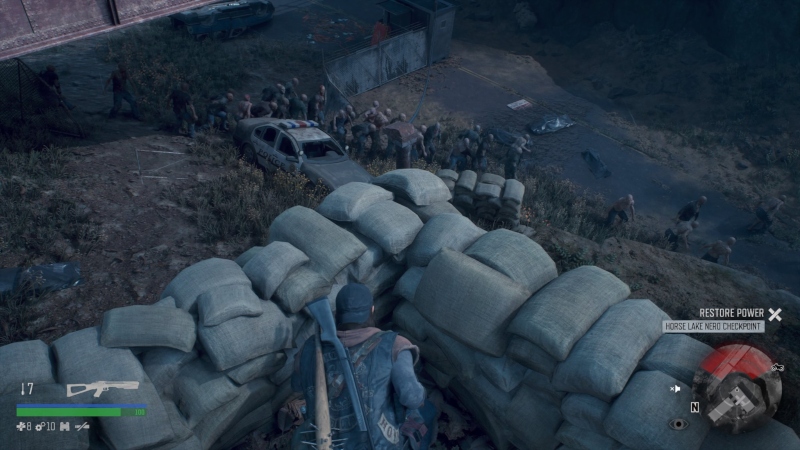
Unfortunately, I feel that I have glimpsed at the next generation of games. Days Gone feels like it was built for the next generation of PlayStation console. The massive resources needed to handle so many layers of lighting, textures, and noise bog down the PS4 to unacceptable levels at times. Framerate drops become frequent in the end-game, which makes driving at high speeds difficult. Nearing a horde seems to trigger the framerate drops, so I have to assume the individual bodies, sounds, pathing, health, and attacks needed for 500 extra characters onscreen is what tips resource management over the edge. I also had two application crashes in 80 hours of play. Not ideal, but a simple restart fixed it, and it is possible that playing such long hours overtaxed the working memory since it was after more than ten hours of constant play each time. When the PlayStation 5 makes its unsurprising debut, Days Gone is going to be my first game played on the system. I am fairly certain this game was built to better specs than the PS4.
It is worth noting that Bend Studio has been pushing patches almost daily to fix known issues, and has already announced some upcoming content that extends the amount of enjoyment players can expect from end-game content. I don’t personally want anything to do with survival mode, but there are going to be some players who are overjoyed to play that way. To me, this is exactly what inclusive gaming should be; there is no punishment or exclusion of players who can’t or just do not want to complete certain difficult combat sequences but love the story. There are tons of options to adjust the difficulty, as well as independent sound and graphics controls, making the Days Gone accessible to many people. I would suggest to Bend Studios that subtitles have multiple size options, as the current size is far too small for those with low vision. For that same reason, the graphics settings need a wider range in brightness and contrast settings.
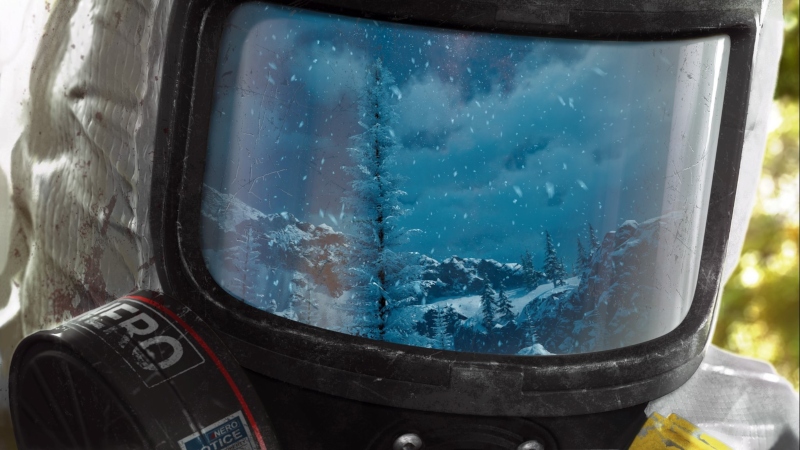
Before I wrap this up, I want to take a second to suggest players all check out the photo mode in Days Gone. Stunningly pretty images can be produced. You can also go overblown and totally gritty if that is your thing. Frames unlock as you progress through the game and reach new achievements. Advanced lighting settings and free camera movement allow for the best portrayal of any scene. Out of the games I have used photo mode in, I enjoy Days Gone photo mode the best.
I thoroughly enjoyed playing Days Gone. The story is compelling, well written, and produced with top-notch acting. There is something in the wasteland for everyone, from fighting hordes head-on to sneaking around and taking out camps of enemies, to riding out on fetch quests. Some bounties are chase games, reminiscent of Mario Kart‘s rainbow bridge. Not my thing, but the physics put into the bike, the landscape, and how weather conditions play into the ride are going to make some players very happy. There are hours upon hours of content and dozens of collectibles to entice completionists. There is lore for days. There is so much to Days Gone that I honestly cannot imagine any player who sticks with it not finding something to enjoy or regretting their purchase. I’m knocking off half a point for the vanilla-WoW inspired farming in the first five hours just to get enough experience to complete anything, half a point for the overuse of scripted events, and one point for the framerate and crash issues. They don’t break the game, but they’re not fun. Go forth and kill things, friends.
 (8 / 10)
(8 / 10)
Great
 (8 / 10)
(8 / 10)Rely on Horror Review Score Guide
Review based on a retail copy of the game.

 DestinyLeah
DestinyLeah
